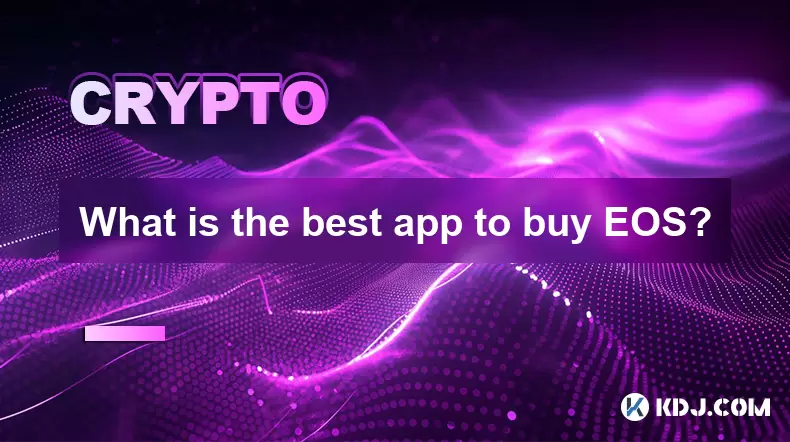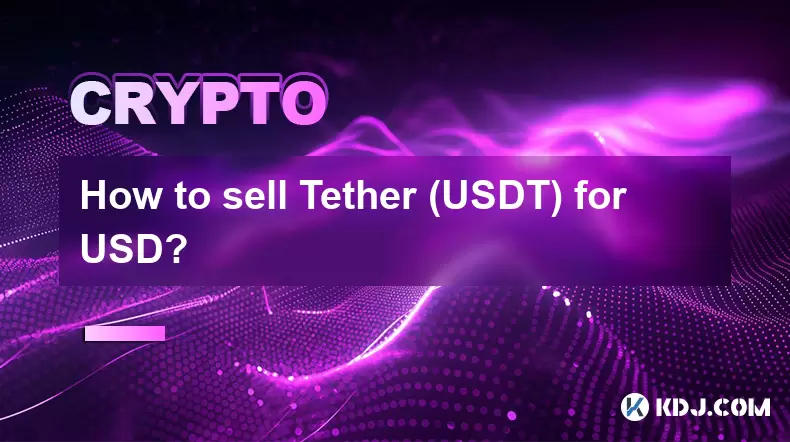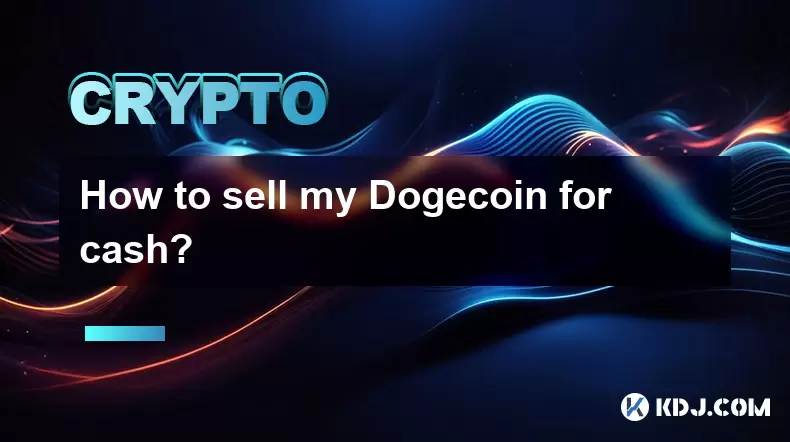-
 Bitcoin
Bitcoin $115100
1.27% -
 Ethereum
Ethereum $3675
2.71% -
 XRP
XRP $2.995
1.45% -
 Tether USDt
Tether USDt $1.000
0.02% -
 BNB
BNB $769.8
2.64% -
 Solana
Solana $168.0
3.25% -
 USDC
USDC $0.9999
-0.01% -
 TRON
TRON $0.3371
1.48% -
 Dogecoin
Dogecoin $0.2051
3.36% -
 Cardano
Cardano $0.7394
2.30% -
 Hyperliquid
Hyperliquid $38.15
0.42% -
 Stellar
Stellar $0.3966
-0.36% -
 Sui
Sui $3.486
2.93% -
 Chainlink
Chainlink $16.72
2.52% -
 Bitcoin Cash
Bitcoin Cash $568.0
4.36% -
 Hedera
Hedera $0.2440
2.59% -
 Ethena USDe
Ethena USDe $1.001
0.04% -
 Avalanche
Avalanche $22.16
2.06% -
 Litecoin
Litecoin $119.1
-0.73% -
 UNUS SED LEO
UNUS SED LEO $8.991
0.04% -
 Toncoin
Toncoin $3.232
-0.39% -
 Shiba Inu
Shiba Inu $0.00001233
2.82% -
 Uniswap
Uniswap $9.717
2.53% -
 Polkadot
Polkadot $3.664
1.85% -
 Dai
Dai $1.000
0.01% -
 Monero
Monero $281.2
-3.89% -
 Bitget Token
Bitget Token $4.350
1.55% -
 Cronos
Cronos $0.1428
5.07% -
 Pepe
Pepe $0.00001050
3.68% -
 Aave
Aave $262.3
3.54%
What is the destruction mechanism of AVAX? What impact does it have on the price of the coin?
Avalanche's AVAX isn't directly burned; instead, transaction fees, staking, and subnet creation indirectly remove AVAX from circulation, creating deflationary pressure. However, price is impacted by broader market trends and ecosystem growth, not solely supply reduction.
Mar 15, 2025 at 07:15 am

Key Points:
- Avalanche's AVAX token doesn't have a built-in, automatic "burn" mechanism like some other cryptocurrencies. Token reduction happens indirectly through various ecosystem activities.
- AVAX is used for transaction fees, staking rewards, and subnet creation, effectively removing AVAX from circulation.
- The rate of AVAX reduction depends on network activity and user participation in these activities. Higher network usage leads to more AVAX being "destroyed" indirectly.
- The impact on AVAX's price is complex and not solely determined by the token reduction. Market sentiment, overall crypto market trends, and other factors play significant roles.
What is the destruction mechanism of AVAX?
Unlike some cryptocurrencies with explicit burn mechanisms where tokens are directly removed from the supply, Avalanche's AVAX token doesn't have a programmed "burn" function. Instead, AVAX tokens are removed from circulation indirectly through various processes integral to the Avalanche ecosystem's functionality. These processes effectively act as a deflationary pressure.
One key mechanism is the use of AVAX for transaction fees. Every transaction on the Avalanche network requires a fee paid in AVAX. These fees are then distributed to validators who secure the network. While not a direct "burn," this process permanently removes AVAX from active circulation.
Furthermore, AVAX is used to secure the network through staking. Users stake their AVAX to validate transactions and earn rewards. While these rewards introduce new AVAX, the staking process itself removes a portion of the circulating supply. The net effect on the supply depends on the balance between newly minted and staked AVAX.
The creation of subnets on Avalanche also consumes AVAX. Developers need to pay AVAX to create and maintain their subnets, thereby reducing the circulating supply. This mechanism is especially relevant for projects building on Avalanche, further contributing to the indirect reduction of AVAX.
The overall effect of these mechanisms is a gradual, indirect reduction of AVAX in circulation. The rate of this reduction is not constant and is influenced by factors such as network usage, transaction volume, and the number of active validators.
What impact does it have on the price of the coin?
The impact of this indirect "destruction" mechanism on AVAX's price is multifaceted and not solely dependent on the reduction in supply. While a decrease in circulating supply can theoretically put upward pressure on the price (due to basic supply and demand economics), other factors significantly influence AVAX's price.
Market sentiment plays a dominant role. Positive news about Avalanche's ecosystem, partnerships, or technological advancements can lead to increased demand and price appreciation, regardless of the rate of AVAX reduction. Conversely, negative news or broader market downturns can outweigh any deflationary pressure from reduced supply.
The overall cryptocurrency market trend also heavily influences AVAX's price. A bullish market generally benefits all cryptocurrencies, including AVAX, while a bearish market can cause price drops despite any deflationary mechanisms. The impact of the indirect AVAX reduction is thus intertwined with broader market forces.
Technological advancements and ecosystem growth within the Avalanche network also affect the price. Increased adoption, the launch of new decentralized applications (dApps), and improvements to the network's scalability can all lead to increased demand and a higher price for AVAX.
Competition from other cryptocurrencies is another crucial factor. The performance of competing platforms and the overall attractiveness of their ecosystems directly impact AVAX's market share and, consequently, its price. Therefore, the price of AVAX is not solely determined by its indirect destruction mechanism.
Frequently Asked Questions:
Q: Is AVAX truly deflationary?
A: While Avalanche doesn't have a direct burn mechanism, the various ways AVAX is consumed within the ecosystem create a deflationary pressure. However, it's not guaranteed to be consistently deflationary, as staking rewards introduce new AVAX. The net effect depends on the balance between these processes.
Q: How can I track the rate of AVAX reduction?
A: There isn't a single, readily available metric to directly track the rate of AVAX reduction. You would need to analyze various on-chain data points like transaction fees, staking activity, and subnet creation to estimate the net change in circulating supply. Various blockchain explorers can provide some of this data.
Q: Does the AVAX reduction guarantee price appreciation?
A: No, the reduction in AVAX supply is only one factor influencing its price. Market sentiment, overall crypto market conditions, competition, and technological developments all play crucial roles. A decrease in supply doesn't automatically translate into price increases.
Q: Are there any plans to introduce a direct burn mechanism for AVAX?
A: Currently, there are no official announcements or proposals suggesting the implementation of a direct burn mechanism for AVAX. The current indirect mechanisms are considered sufficient for managing the token supply.
Disclaimer:info@kdj.com
The information provided is not trading advice. kdj.com does not assume any responsibility for any investments made based on the information provided in this article. Cryptocurrencies are highly volatile and it is highly recommended that you invest with caution after thorough research!
If you believe that the content used on this website infringes your copyright, please contact us immediately (info@kdj.com) and we will delete it promptly.
- HashFlare Founders Face the Music: Jail Time Looms?
- 2025-08-07 14:30:12
- Pepeto's Pounce: Meme Coin Mania Meets Blockchain Infrastructure
- 2025-08-07 15:10:12
- Parataxis, SPAC Merger, and Bitcoin Treasury: A New York Minute on Crypto's Latest Moves
- 2025-08-07 15:30:12
- Toshi on Binance.US: A Memecoin's Big Break
- 2025-08-07 14:30:12
- Bitcoin, SPAC Mergers, and Parataxis: A New Yorker's Take on Crypto's Wall Street Moment
- 2025-08-07 14:50:27
- Bitcoin, Collateral, and Loan Strategies: A New York Minute on the Future of Finance
- 2025-08-07 14:50:27
Related knowledge

What is the best app to buy EOS?
Aug 07,2025 at 04:35pm
Understanding EOS and Its Role in the Cryptocurrency EcosystemEOS is a blockchain platform designed to support decentralized applications (dApps) with...

How to sell Tether (USDT) for USD?
Aug 07,2025 at 03:29pm
Understanding Tether (USDT) and Its USD ValueTether (USDT) is a stablecoin designed to maintain a 1:1 value ratio with the United States Dollar (USD)....

How to sell my Bitcoincoin for cash?
Aug 07,2025 at 02:14pm
Understanding the Basics of Selling Dogecoin for CashSelling Dogecoin for cash involves converting your DOGE tokens into a fiat currency such as USD, ...

What is Chainlink (LINK)?
Jul 22,2025 at 02:14am
Understanding Chainlink (LINK): The Decentralized Oracle NetworkChainlink is a decentralized oracle network designed to bridge the gap between blockch...

What is Avalanche (AVAX)?
Jul 22,2025 at 08:35am
What is Avalanche (AVAX)?Avalanche (AVAX) is a decentralized, open-source blockchain platform designed to support high-performance decentralized appli...

What is Polkadot (DOT)?
Jul 19,2025 at 06:35pm
Understanding the Basics of Polkadot (DOT)Polkadot (DOT) is a multi-chain network protocol designed to enable different blockchains to transfer messag...

What is the best app to buy EOS?
Aug 07,2025 at 04:35pm
Understanding EOS and Its Role in the Cryptocurrency EcosystemEOS is a blockchain platform designed to support decentralized applications (dApps) with...

How to sell Tether (USDT) for USD?
Aug 07,2025 at 03:29pm
Understanding Tether (USDT) and Its USD ValueTether (USDT) is a stablecoin designed to maintain a 1:1 value ratio with the United States Dollar (USD)....

How to sell my Bitcoincoin for cash?
Aug 07,2025 at 02:14pm
Understanding the Basics of Selling Dogecoin for CashSelling Dogecoin for cash involves converting your DOGE tokens into a fiat currency such as USD, ...

What is Chainlink (LINK)?
Jul 22,2025 at 02:14am
Understanding Chainlink (LINK): The Decentralized Oracle NetworkChainlink is a decentralized oracle network designed to bridge the gap between blockch...

What is Avalanche (AVAX)?
Jul 22,2025 at 08:35am
What is Avalanche (AVAX)?Avalanche (AVAX) is a decentralized, open-source blockchain platform designed to support high-performance decentralized appli...

What is Polkadot (DOT)?
Jul 19,2025 at 06:35pm
Understanding the Basics of Polkadot (DOT)Polkadot (DOT) is a multi-chain network protocol designed to enable different blockchains to transfer messag...
See all articles

























































































